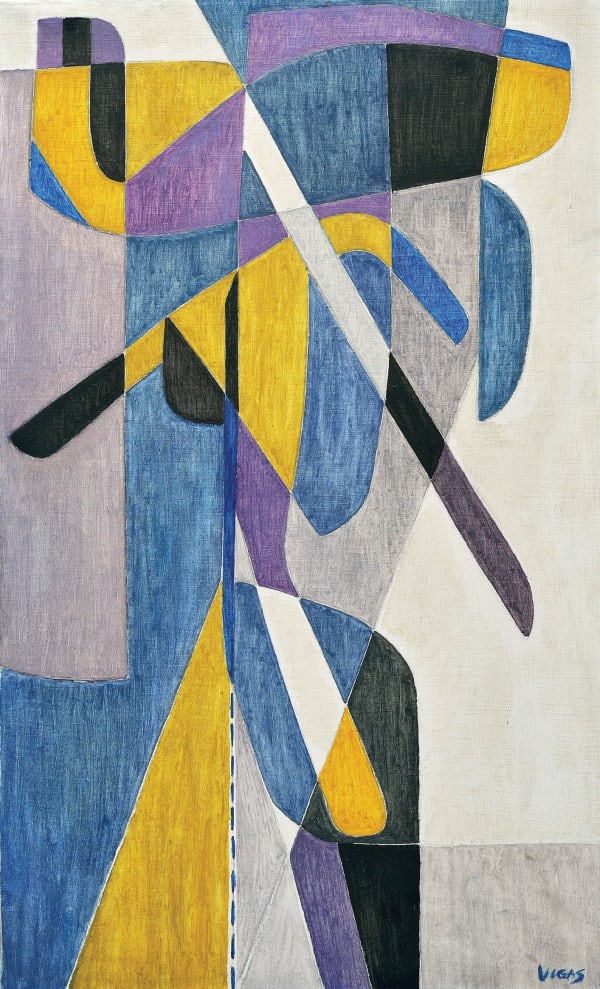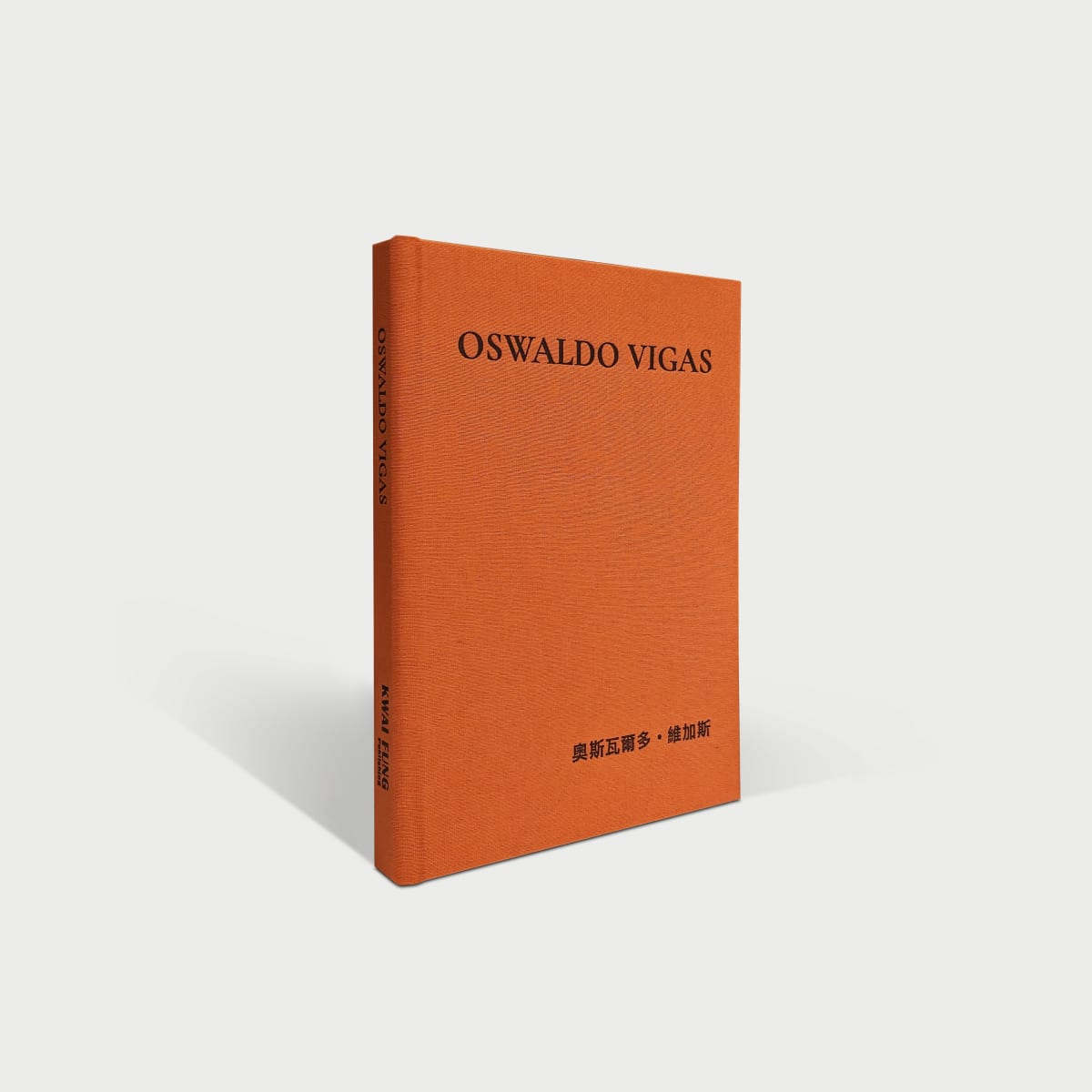Oswaldo Vigas 奧斯瓦爾多·維加斯 1923-2014
Born in 1923 in Valencia, Venezuela, Oswaldo Vigas was one of the most influential Latin American artists in the post-war period. He was the first Venezuelan artist to draw on ancient iconographies from pre-Columbian and ancient African cultures to articulate a new language that helps define Latin American modernism in its own terms. While rooted in Latin American spirit, his oeuvre speaks to man's shared origin and reveals the primal aspects of human nature hidden in our collective unconscious. Oscillating between abstraction and figuration, his diverse styles synthesize different beings, histories and cultures.
Vigas received his formal education in medicine, all the while teaching himself to paint. Without going into practice, he became a professional artist after graduating. In 1948, a visit to the Museum of Natural Science in Caracas led him to discover the essence of his cultural heritage from pre-Columbian civilizations. The mythical universe of his ancestors and its close tie to the natural landscape would form the core of his organic imagery and inform his recurrent themes of coexistence and the source of life.
Vigas won a number of prizes during his early period and had his first solo exhibition in 1942. In 1952, his work Gran Bruja (Great Witch) received the National Visual Arts Award, a prestigious prize that allowed the artist to go to Paris to further pursue his artistic career. He spent 12 years in Paris (1952 to 1964), where he was associated with many Latin American and European avant-gardes, such as Picasso, Wifredo Lam, Fernand Léger, Max Ernst, and Roberto Matta, among others. He played a critical role in fostering cultural exchange across the continents and positioning Latin American art in the international art scene.
Back in Venezuela, Vigas became an important cultural figure, and he continued to paint and reinvent his hybrid figures until the end of his life. He had served as the Director of Culture at the University of the Andes and the Director of the Arts Division of the National Culture Institute, playing a significant role in shaping the cultural landscape of the country.
Vigas has been recognized with over 100 solo exhibitions and has received numerous awards. His works are collected by major museums and institutions worldwide, such as National Gallery of Art and Museum of Fine Art in Venezuela; Museum of Contemporary Art in Peru; Museum of Contemporary Art in Columbia; Anger Museum of Fine Arts and Villa Tamaris Centre of Art in France; Art Museum of the Americas and Museum of Fine Arts Houston in the USA.
-
 Oswaldo Vigas 奧斯瓦爾多 · 維加斯 , Ancestral《思源》, 1976
Oswaldo Vigas 奧斯瓦爾多 · 維加斯 , Ancestral《思源》, 1976 -
 Oswaldo Vigas 奧斯瓦爾多 · 維加斯 , De Paseo con su Mascota (Strolling with Mascot)《吉祥物伴遊》, 2007
Oswaldo Vigas 奧斯瓦爾多 · 維加斯 , De Paseo con su Mascota (Strolling with Mascot)《吉祥物伴遊》, 2007 -
 Oswaldo Vigas 奧斯瓦爾多 · 維加斯 , Objeto Americano en Tres Bloques (American Object in Three Blocks)《美洲印象三段式》, 1956
Oswaldo Vigas 奧斯瓦爾多 · 維加斯 , Objeto Americano en Tres Bloques (American Object in Three Blocks)《美洲印象三段式》, 1956 -
 Oswaldo Vigas 奧斯瓦爾多 · 維加斯 , Objeto Americano Negro (Black American Object)《美洲的黑色旋律》, 1955
Oswaldo Vigas 奧斯瓦爾多 · 維加斯 , Objeto Americano Negro (Black American Object)《美洲的黑色旋律》, 1955
Early Works (1942 – 1952)
Vigas's earliest works show clear influences from European avant-gardes, most notably Cubism and Surrealism. A turning point took place in 1948 when he began to draw on ancient iconographies from pre-Columbian cultures and created his iconic female figures which would come to be known as Brujas (witches). These are hybrid creatures that exist between the realms of humans, animals, insects, plants and minerals, things that, in Vigas’s words, “should never have been separated.” Suggestive of the maternal energy of the earth and the source of life, these figures define Vigas’s entire career and would return to his canvas again and again in different forms.
Geometric Abstraction (1953 – 1958)
While in Paris, a sense of foreignness propelled Vigas to engage with his Latin American root and mestizo identity shaped by the mix of cultural influences from indigenous traditions, European colonization and African slavery. Rather than following the rigidity and mechanic repetition of Geometric Abstraction embraced by many artists at that time as a way to break with traditions, Vigas chose a different path that connected his time with the ancient past. Reducing figurative elements and forms found in nature into geometric symbols, Vigas’s geometric style exudes a totemic and organic aesthetics. With an internal logic that unravels the hidden order of the universe, his works reconcile nature and culture, intuition and rationality.
Informalism (1959 – 1964)
In 1959, Vigas’s style took a dramatic turn – geometric forms gave way to textured color fields and gestural brushstrokes. Pure abstraction at first glance, these works maintain a figurative presence as hinted by their titles with references to the mysterious landscape of South America. Influenced by Abstract Expressionism and Zen Buddhism, the artist found a new avenue to express his turbulent emotions caused by the loss of his brother and the intense political climate back home. Hidden behind layers of earthy colors and sweeping brushstrokes are the American landscape and totemic figures that address man’s existential concern.
Neo-Figuration and the Geometry of Sensitivity
(1964 to late 1980s)
Vigas’s return to his homeland marked a return to the totemic female figures in his works. By now, the artist was in full control of his artistic language, moving freely in between abstraction and figuration. In contrast to the solemnity in his early works, his canvases from this period are charged with a renewed vigor. There was a brief period from 1969 to 1972 where Vigas revisited geometric form before his figures regained an increasing prominent position on his canvas. Referred by the artist as “geometry of sensitivity”, these works feature figures in interlocking forms that seem to be in a constant state of transformation moving in and out of the background. They reference deities from different ancient cultures and various aspects of human existence, probing the line between man’s emotional and rational self.
Childlike Figures (1990s onwards)
Vigas' s child-like figures emerged since the early 1990s when the artist was almost seventy years old. Conveying a sense of naivety and humor, they seem to be reincarnated by the assemblage of fragmented body parts of different creatures. Constructing his figures between men and animals, the artist simultaneously heightens and denies the presence of human, expressing the tension between our animal drive and civilization.
-
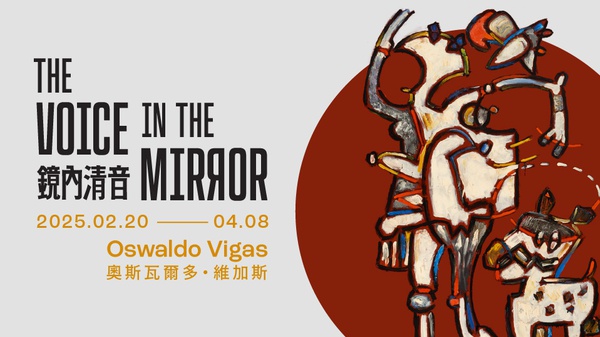
The Voice in the Mirror – Solo Exhibition of Oswaldo Vigas
Kwai Fung Hin Art Gallery 20 Feb - 8 Apr 2025Kwai Fung Hin is pleased to present The Voice in the Mirror, a solo exhibition of Oswaldo Vigas (1923 – 2014) that examines the Venezuelan...Read more -
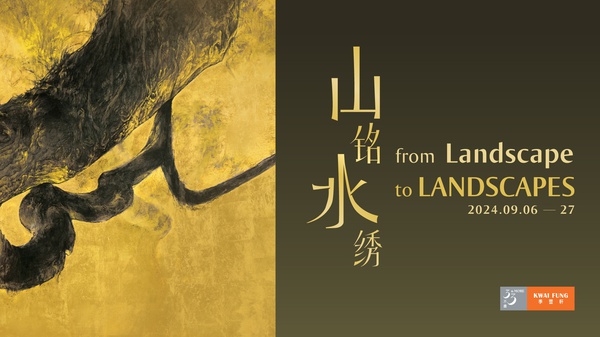
From Landscape to Landscapes
Alliance Française de Singapour 6 - 27 Sep 2024Kwai Fung Hin is pleased to announce its debut exhibition in Singapore, From Landscape to Landscapes, a group exhibition that brings together works by artists...Read more -

Oswaldo Vigas: Return, Always Return
Kwai Fung Hin Art Gallery 16 Dec 2023 - 31 Jan 2024Kwai Fung Hin is pleased to present Oswaldo Vigas: Return, Always Return, the first solo exhibition of the Venezuelan artist in Asia and also his first exhibition with Kwai Fung Hin supported by Oswaldo Vigas Foundation.Read more
-

Booth C01丨KWAI FUNG HIN AT TOKYO GENDAI 2024
4 - 7 Jul 2024Kwai Fung Hin Art Gallery is thrilled to announce its debut at Tokyo Gendai art fair this year. The gallery will showcase a diverse and...Read more -
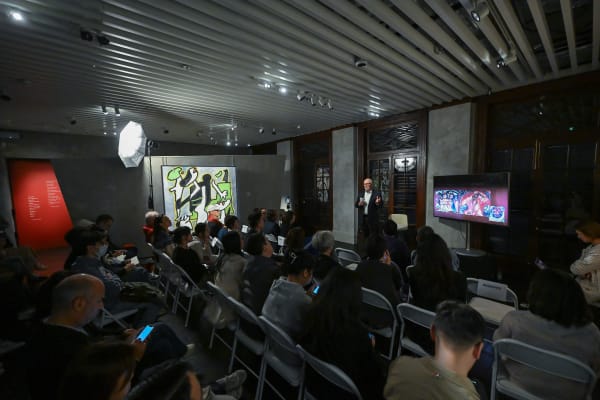
Primitive Modern: A Look at the 20th Century Latin American Art
16 Dec 2023Significant attention has turned to Latin American modernism in recent years as global discourses continue to broaden our understanding of modern art history beyond the...Read more
-
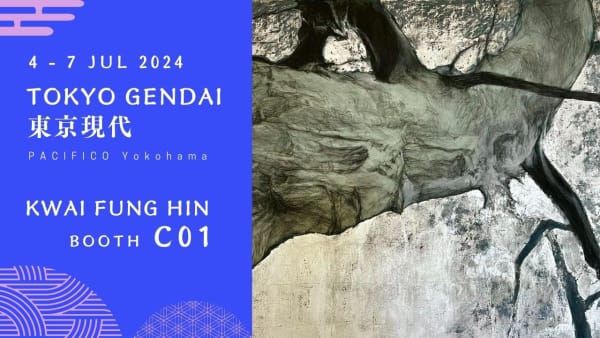
Booth C01丨KWAI FUNG HIN AT TOKYO GENDAI 2024
4 - 7 Jul 2024Kwai Fung Hin Art Gallery is thrilled to announce its debut at Tokyo Gendai art fair this year. The gallery will showcase a diverse and...Read more -

Booth D13 丨 Taipei Dangdai Art & Ideas 2023
11 - 14 May 2023Kwai Fung Hin Art Gallery is delighted to participate in the Taipei Dangdai Art & Ideas for the first time, with a curation of important artworks from gallery's represented artists, demonstrating extensive cultural experiences and global perspectives, which bridge the West and the East in fresh and remarkable ways.Read more -

Booth 3E03 丨 ART BASEL HONG KONG 2023
21 - 25 Mar 2023Kwai Fung Hin is delighted to participate in the 2023 edition of Art Basel Hong Kong with a selection of important works by modern and contemporary artists.Read more







